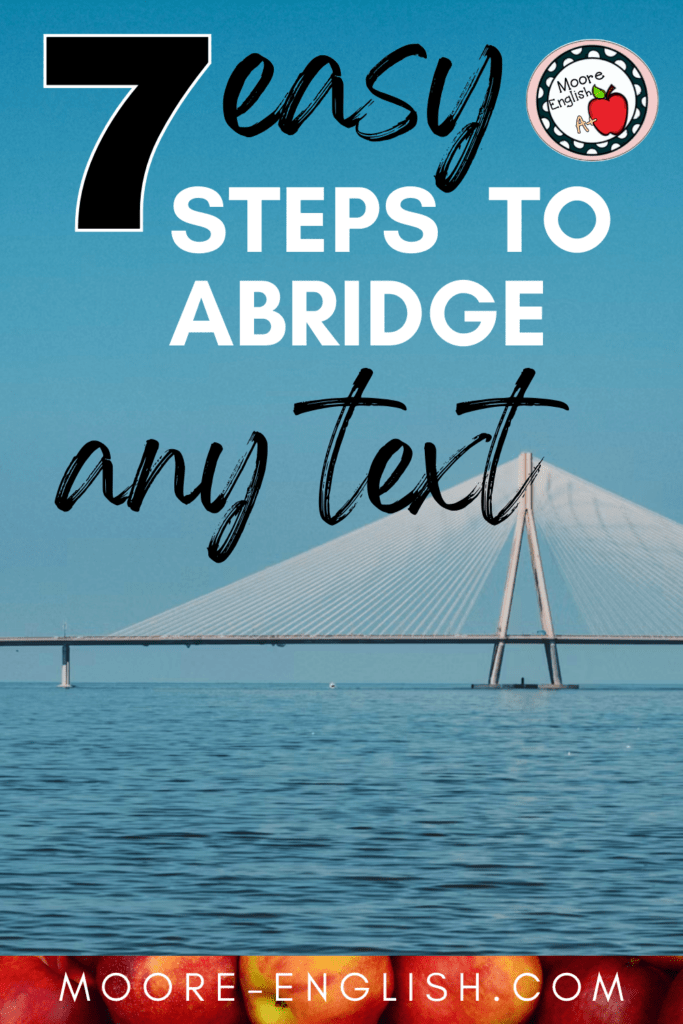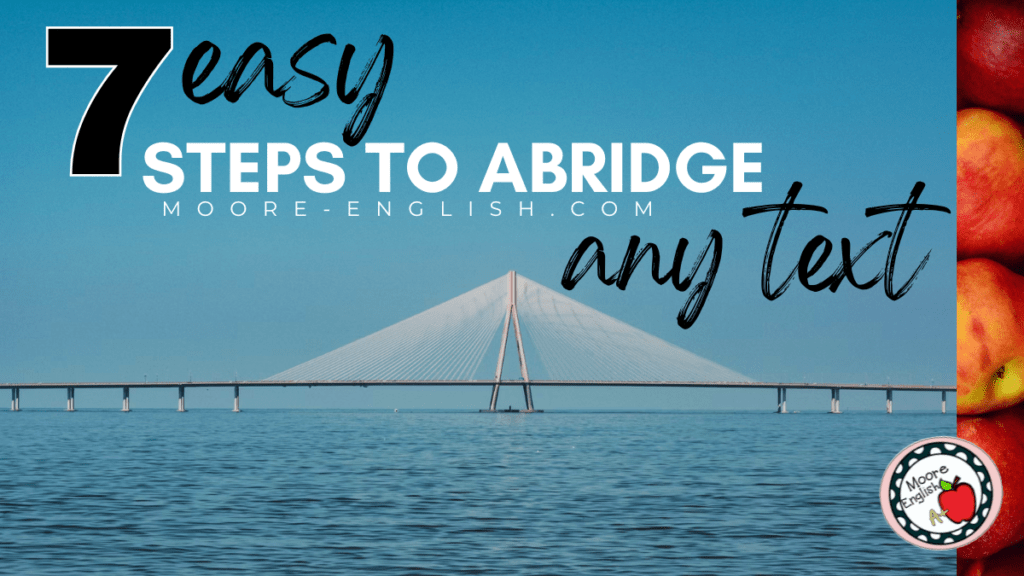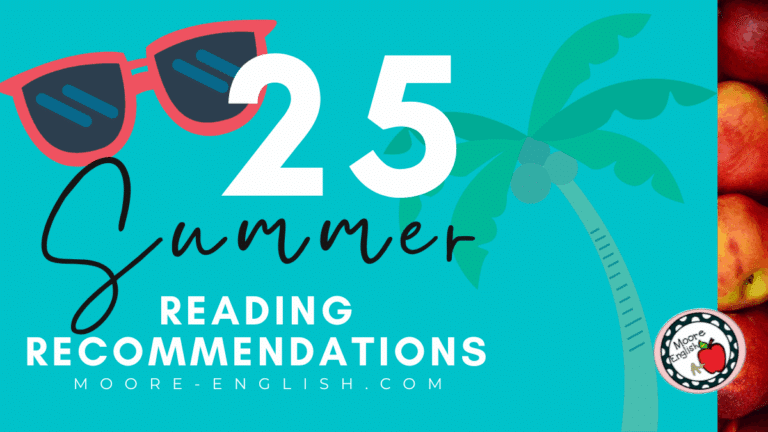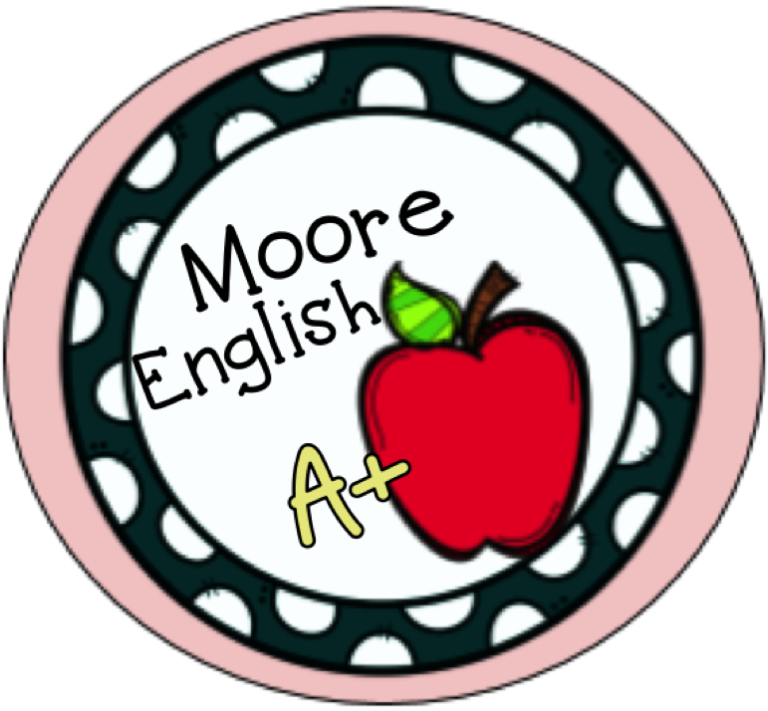Abridging your first text can be daunting! Where do you begin? What tools should you use? How do you know when it’s time to abridge a text?
Over the years, I’ve struggled with all of these questions are one time or another. However, by following these 7 simple steps, I have become a pro at abridging texts.
This post this post may contain affiliate links. Please read the Terms of Use.
Identify Your Reason
No teacher has time to abridge a text for fun, so before you begin abridging your first text, identify your motivation. I’ve written about this before, but here are some general guidelines:
- Do you have a legal document requiring you to provide a student with an abridge text?
- Can you better attack a learning target, instructional goal, or standard with an abridged text?
- Is the original text in a different language? Or does it contain inappropriate material?
- Are you crunched for instructional time and need a shorter version?
If the answer to any of these questions is “yes,” then it’s time to begin abridging your first text!
Make Key Decisions
Before you begin abridging your first text, consider these factors:
- What is your timeframe? How long do you have to work on this? The answer to this question will determine how you answer the next two questions.
- What format do you want to use? For example, when I abridge a text, I prefer to create two columns, one with the text and one with questions or activities that help students unpack the text or practice specific skills. If you are short on time, you may not have enough time to create two columns.
- Similarly, what platform are you using to create your abridged text? Personally, I love Google Slides or Microsoft PowerPoint. Both of these provide users with more flexibility than Google Docs or Microsoft Word. In a slidedeck, users have the power to move text around more easily and to insert images more easily. I almost always use Google Slides so I can easily share with my co-workers. Again, the platform you choose may depend on how much time you can devote to this task.
Gather Resources
Before you begin abridging your first text, gather two resources: translations and text features.
Not every text will require a translation, but if you’re working with a text originally written in Greek or Latin, you’re likely going to need a translation. If you’re creating an abridged text for classroom use, it doesn’t really matter what version you use. However, if you plan to sell your work or share it with others, you might do some research about copyright.
Additionally, determine what text features your abridged text will require. Do you need definitions? An image? A map? A chart or graph? Text features are such important tools for helping students understand a text that lack of text features has inspired me to abridge a text in the first place. For example, my freshman textbook includes Romeo and Juliet but has lackluster text features. This was one of the reasons I chose to abridge Romeo and Juliet.
Getting Started
As you begin abridging your first text, sketch out an ideal end goal, especially in terms of pages. When you teach this text, how much time will you have? Answering that question will help you identify how many pages to include in your final product.
Once you are ready to begin, consider these three factors:
- First, start with vocabulary. Are there vocabulary terms that are especially problematic? For example, Macbeth includes the term “niggard,” which looks like a racial slur but means “stingy.” Similarly, are there vocabulary terms you want to keep? For example, the meaning of “Self-Reliance” changes without “Oversoul.”
- Second, consider the allusions. So often allusions trip students up and can distract from the meaning of the text. Keep allusions that affect the ultimate meaning of the text but ditch allusions that distract students. For example, some of the allusions in The Great Gatsby are what encouraged me to abridge the text. This also gave me an opportunity to provide footnotes for allusions I decided to keep.
- Third, consider your audience. Is there something in the text that is inappropriate for your audience? Not to pick on the Scottish play, but the Porter scene is another reason I chose to abridge Macbeth. It’s a scene that doesn’t further the plot and usually ends up distracting and confusing my students.
Abridging Your First Text is Easier with AI
As you begin abridging your first text, consider using AI. Especially if you’re looking to cut a text from 10 pages to 3 paragraphs, AI can be an easy (and free) way to begin abridging. I am by no means an AI expert, but I’ve had luck with ChatGPT and Brisk.
A word of caution: AI-generated content has tricky copyright rules, so if you are designing a resource with the intention to sell it, you may need to do some homework.
When You Should NOT Abridge
As teachers, we all know the importance of working smarter, not harder. So before you set out to abridge a text, see if someone has already done the hard work for you! There is no shame in letting someone else do the hard work for you! Check out these titles I have already abridged:
- Macbeth
- Beowulf
- “Berenice”
- The Odyssey
- Julius Caesar
- “Winter Dreams“
- The Great Gatsby
- Romeo and Juliet
- “To Build a Fire“












